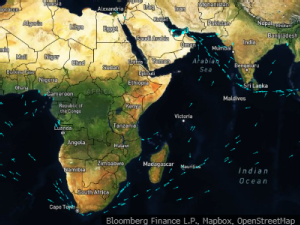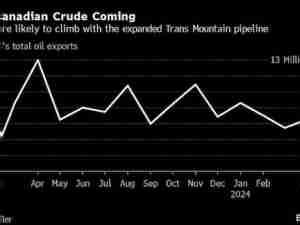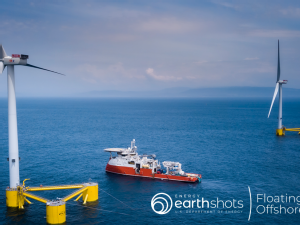European natural gas fluctuated as traders weighed the prospects for talks between U.S. President Joe Biden and his Russian counterpart Vladimir Putin.
The benchmark contract in the Netherlands gave up declines of as much as 6.5% after Interfax reported that Russian forces killed five people and destroyed two armored personnel carriers of the Ukrainian forces who tried to cross the Russian border. Prices had earlier pared losses with the Kremlin saying there are “no concrete plans” yet for the presidential summit.
The market has swayed with every move in the standoff. The White House had accepted a French proposal for the talks on the condition that Russia doesn’t invade its neighbor. That had raised fresh hopes of a diplomatic solution to the tensions. Russia has repeatedly denied it plans to invade Ukraine.
The impasse has been affecting prices of everything from energy, metals and food to equities. Gas markets particularly remain on edge as flows through Ukraine are a linchpin in Europe’s energy security, with about a third of Russian supplies typically coming through the country.
“The past week was marked by conflicting dynamics, with efforts to both prepare for conflict but also extend diplomatic efforts,” analysts at UBS Group AG wrote in a note. “A durable breakthrough” may be unlikely in the coming days, it said.
Dutch front-month gas futures, a benchmark for Europe, rose 1.5% at 74.85 euros a megawatt-hour as of 2:10 p.m. in Amsterdam. The U.K. equivalent contract was 1.1% higher at 178.35 pence a therm, after declining as much as 5.4% earlier.
The proposed presidential talks come after a weekend of increased tensions. Biden had warned on Friday that an attack, including a strike on the capital Kyiv, was possible within days. British Prime Minister Boris Johnson said on Sunday that the U.K and U.S. could stop Russian companies from trading in pounds and dollars if Russia went through with an attack.
Any sanctions impacting Russia’s gas supplies would boost price volatility, Wael Sawan, Shell Plc’s head of integrated gas, renewables and energy solutions, said Monday. The company, one of the world’s biggest liquefied natural gas traders, would look to supply Europe “as and when we can,” but “there is an incredibly tight supply-demand market at the moment, so those cargoes aren’t freely available.”
Gas supplies from Russia, Europe’s top provider, have been curbed in recent months amid what the nation’s exporter Gazprom PJSC has said were lower requests from its long-term buyers. Robust LNG deliveries, flows from Norway, and warm and windy weather have helped offset the decline in Russian flows and pushed prices down from December’s records.
“The situation between Ukraine and Russia will be key to the overall direction of the gas market due to associated risk,” said Tom Marzec-Manser, an analyst for European gas and LNG at ICIS. Gas was also under pressure on Monday because of high wind power, which lowers demand for the fuel for electricity generation, he said.
The U.S has told allies that any Russian invasion would potentially see it target multiple cities beyond the capital Kyiv, according to three people familiar with the matter. Cities that could also come under attack include Kharkiv in the northeast and Odessa and Kherson in the south, said the people, all Western officials who asked not to be named talking about sensitive matters.
Kharkiv is about three hours away from Sudzha, a key entry point for Russian gas transiting to Europe through Ukraine. Kherson is near the major grain export port of Mykolaiv, and not far from Odessa—another commodities hub.









